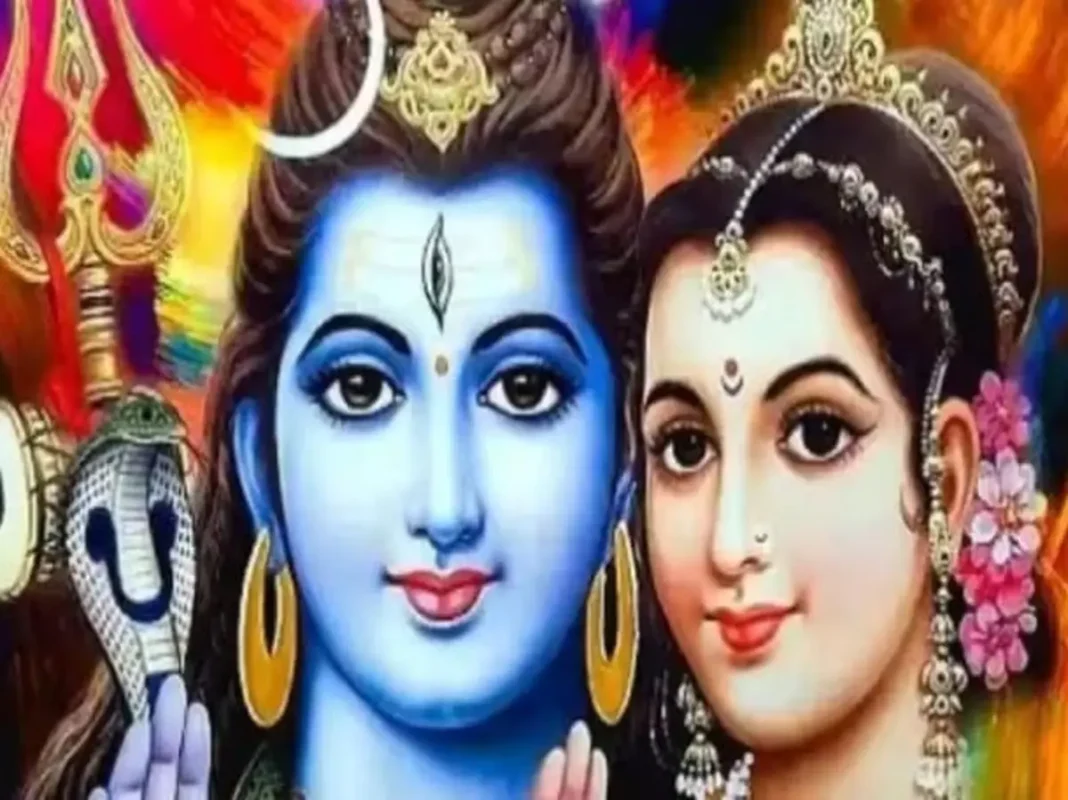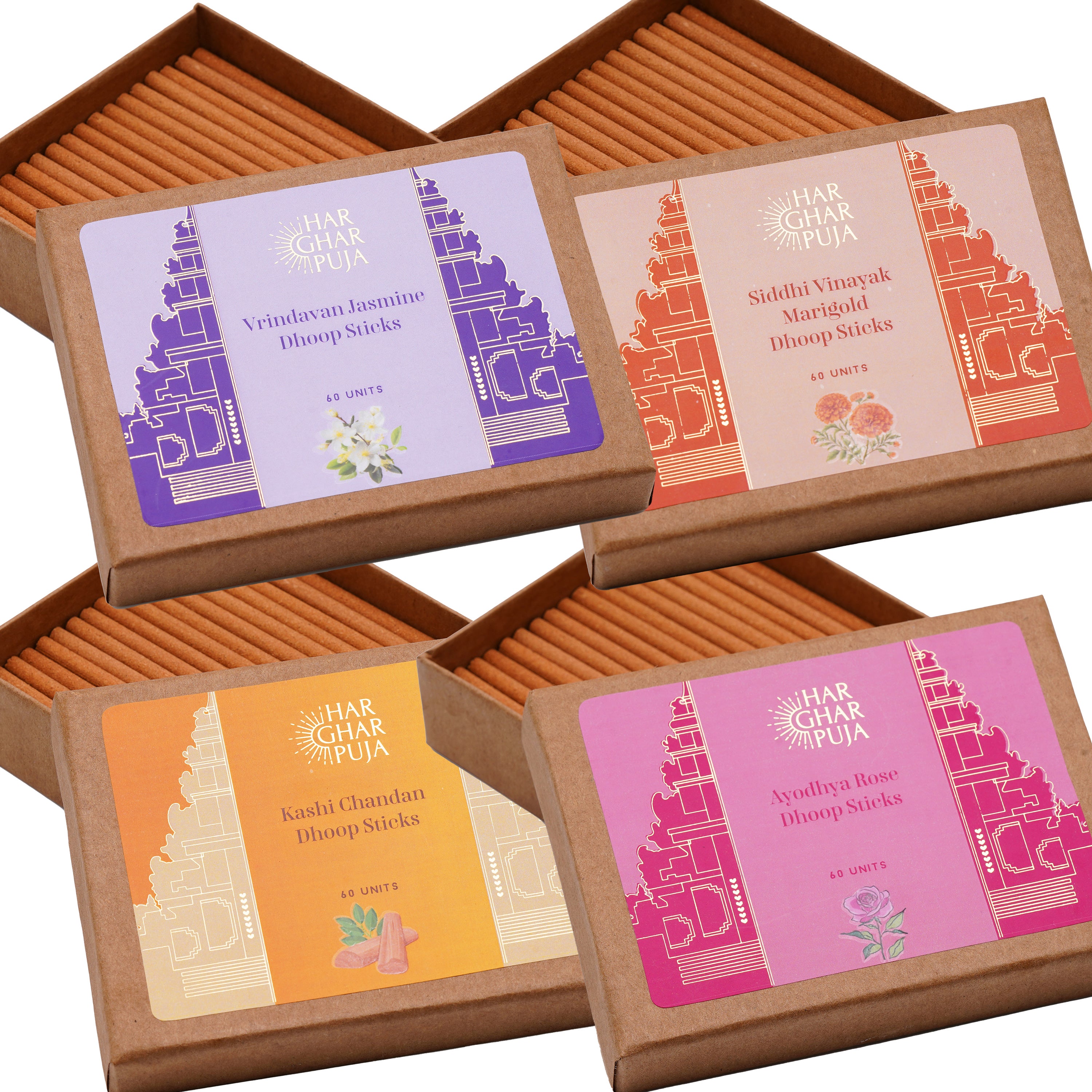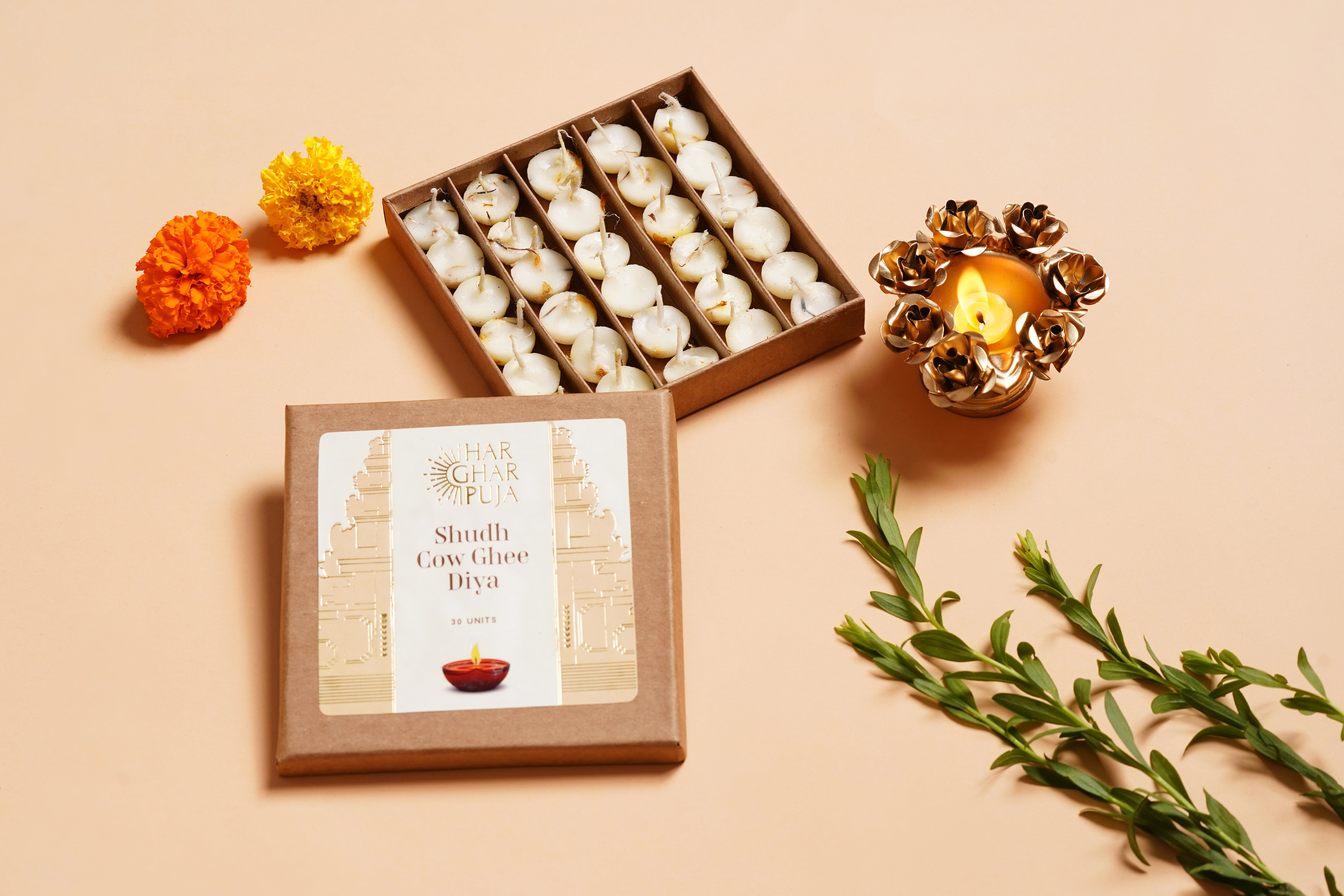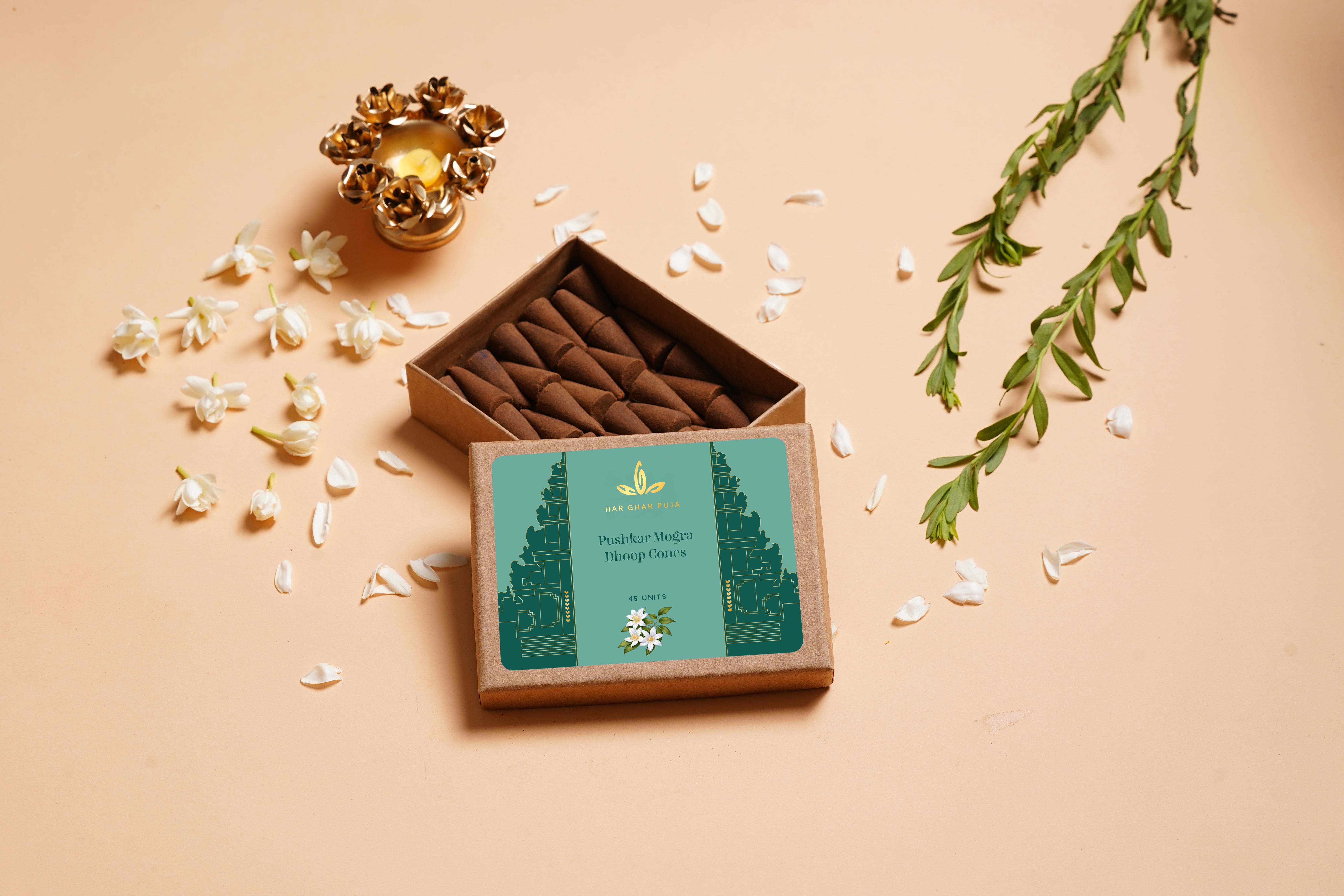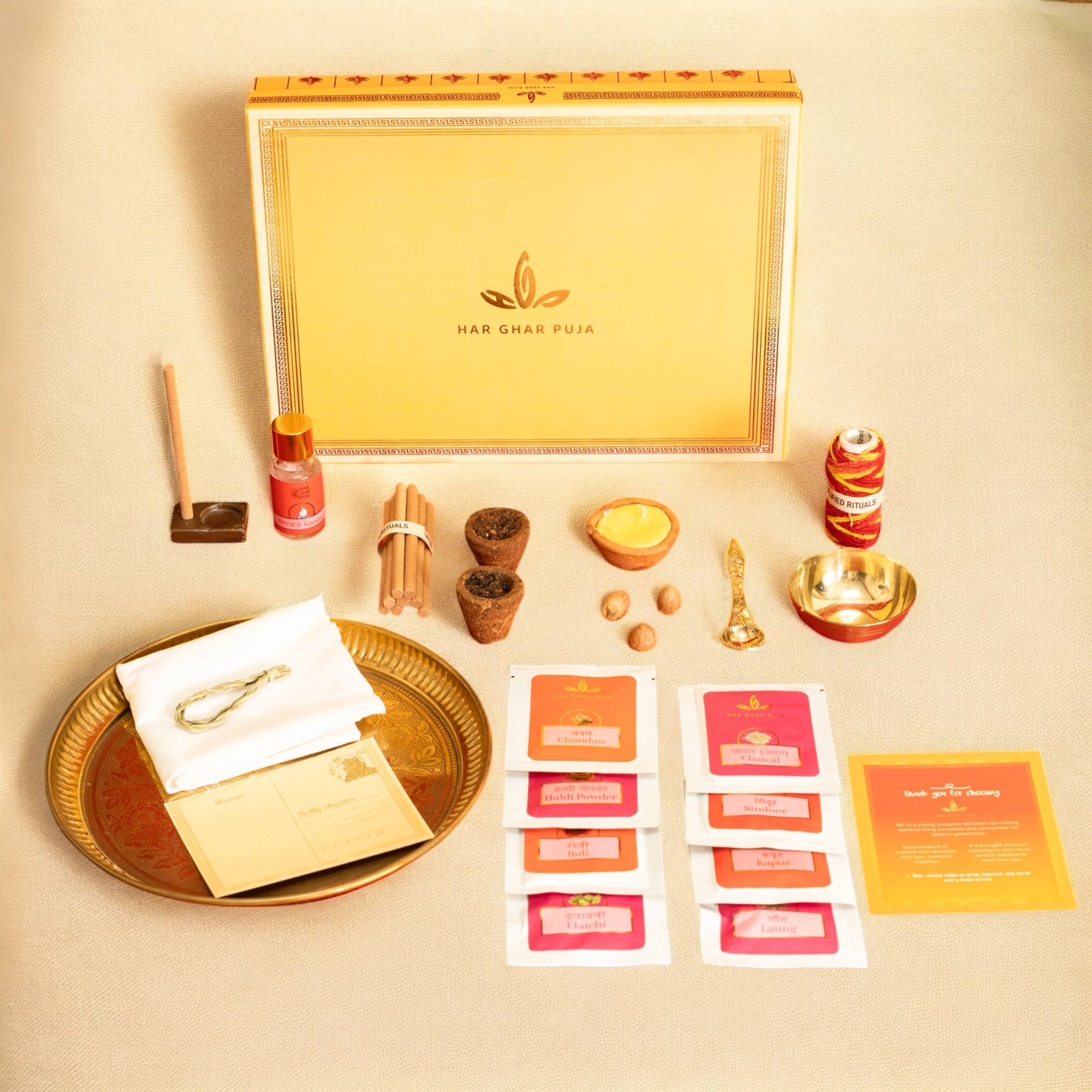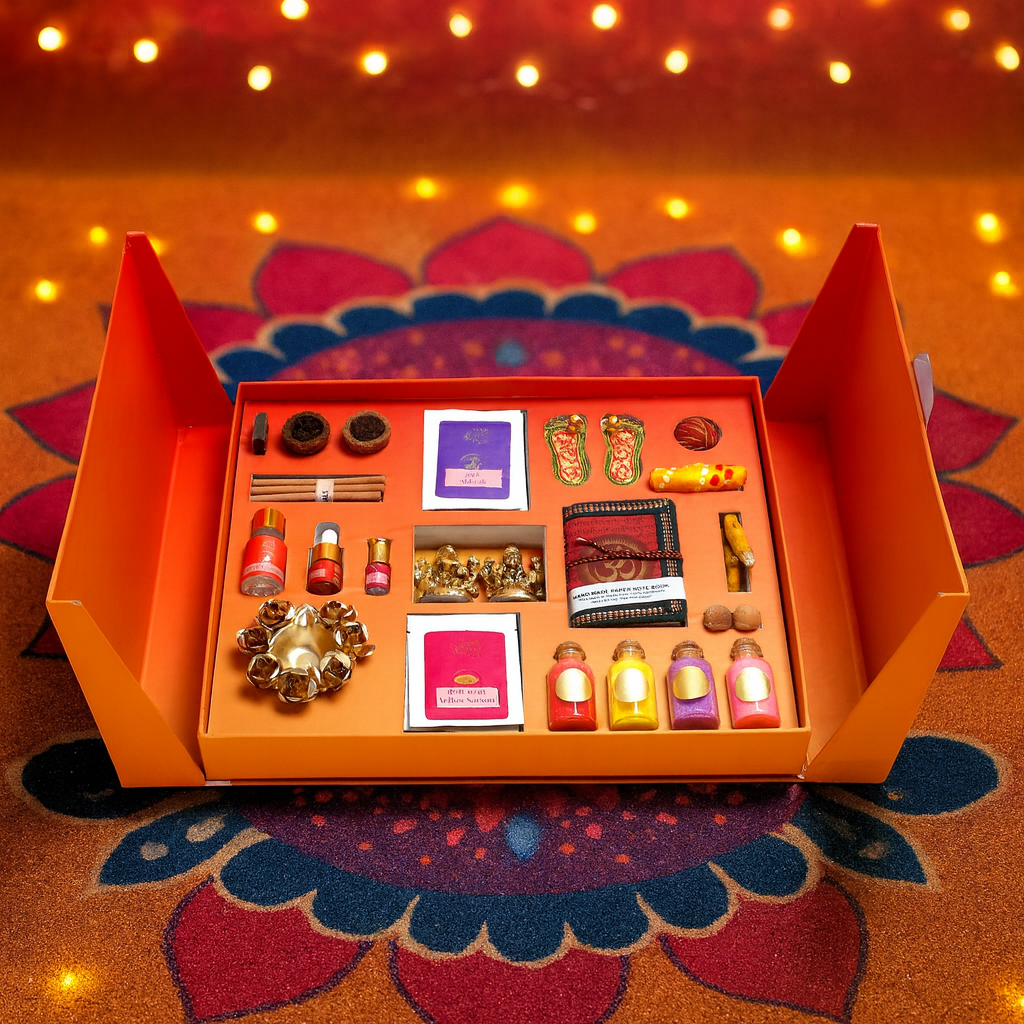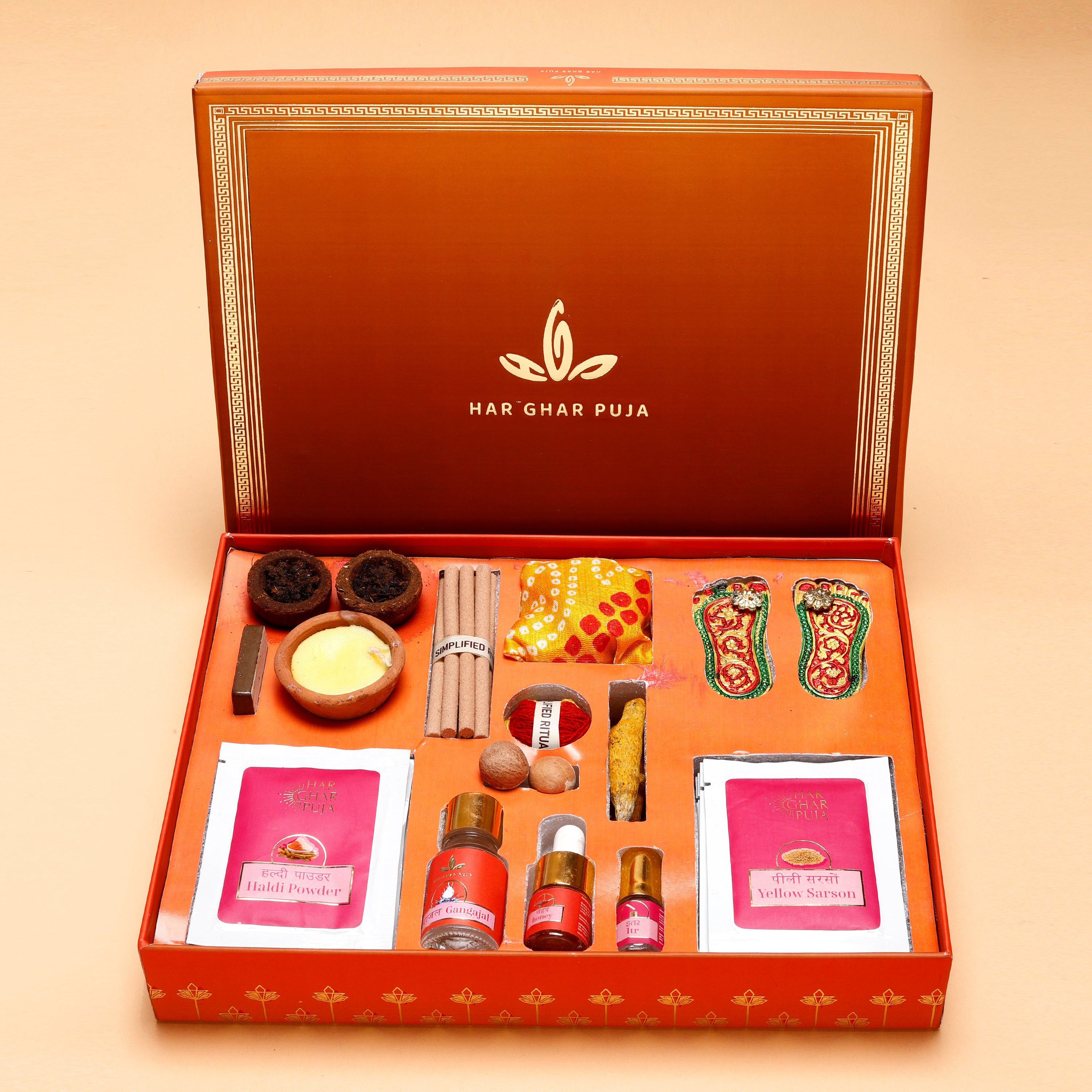Teej Puja, primarily observed in North India at the onset of the monsoon, is a vibrant festival deeply rooted in spiritual significance and a profound connection to nature. It is celebrated for overall prosperity, symbolizing the joyous arrival of the rains that rejuvenate Mother Earth, signifying the sacred union of Father Sky with Mother Earth. This auspicious occasion also commemorates the divine marriage ceremony of Lord Shiva and Goddess Parvati, an embodiment of unwavering devotion and marital bliss.
To perform the Puja in a proper manner and truly understand its essence, it’s crucial to appreciate why each material and step in the process is important, aligning with the festival’s purpose.
The Significance of Materials and Process
The Arrival of Monsoon and Mother Earth’s Rejuvenation: The monsoon brings life-giving rains after the scorching summer, transforming the parched land into lush greenery. This renewal is seen as Mother Earth’s joy and fertility. The festival acknowledges nature’s bounty and expresses gratitude for the sustenance it provides. The “greenery” (Hariyali) aspect of Teej (often called Hariyali Teej) is deeply symbolic of this.
Green attire, bangles, and mehendi: Women traditionally adorn themselves in green clothes and bangles, and apply intricate henna designs. This is a direct reflection of the lush green landscapes brought by the monsoon, symbolizing prosperity, fertility, and new beginnings.
Swings (Jhulas): Setting up and enjoying swings is a popular ritual. It symbolizes the joy and lightheartedness associated with the monsoon season and connects to the natural swaying of trees in the gentle rain.
The Union of Father Sky and Mother Earth:
The falling rain from the sky onto the earth is a powerful visual metaphor for the cosmic union, leading to creation and abundance. This aspect emphasizes the interconnectedness of all elements and the harmony that results from their union. It signifies balance and the cycle of life.
The Marriage of Lord Shiva and Goddess Parvati:
The central mythological narrative of Teej revolves around Goddess Parvati’s arduous penance (tapasya) to win Lord Shiva as her husband. After 108 rebirths and severe austerities, her unwavering devotion finally moved Shiva, and they were united.
This story makes Teej a profound celebration of marital harmony, unwavering devotion, and a woman’s strength and perseverance. Married women observe the fast and perform the Puja for the longevity, well-being, and prosperity of their husbands, while unmarried girls pray for a husband as devoted as Lord Shiva.
Ingredients needed to perform Teej Puja:
- Idols of Lord Shiva and Goddess Parvati (often Ganesha too): Clay or sand idols of the divine couple are central to the Puja. Worshipping them directly invokes their blessings for marital bliss.
- Nirjala Vrat (Fast without water): Many women observe a strict fast, often without even water. This is a direct emulation of Parvati’s intense penance, demonstrating devotion and dedication.
- **Solah Shringar (16 adornments): Women beautify themselves with sixteen traditional adornments, symbolizing a married woman’s complete state of grace and auspiciousness, often seen as an offering to Goddess Parvati herself.
- Suhag Samagri: Offerings such as sindoor (vermilion), bangles, bindis, alta, and other items that symbolize a married woman’s marital status are offered to Goddess Parvati. This is believed to bless the woman with unbroken marital bliss.
- Vrat Katha (Fasting Story): Reciting or listening to the Teej Vrat Katha (the story of Shiva and Parvati’s union) is an integral part of the Puja. It reinforces the significance of the fast and the values of devotion and perseverance.
- Panchamrit: A mixture of milk, curd, ghee, honey, and sugar, used for bathing the idols. Each ingredient has symbolic purity and nourishing qualities, representing offerings for the deities’ well-being.
- Flowers, Fruits, Sweets (Bhog): Offering fresh flowers (like roses, belpatra, lotus), fruits, and traditional sweets (like ghewar, gujiya) symbolizes devotion, gratitude, and inviting prosperity.
- Incense sticks (Agarbatti) and Lamps (Diya): The lighting of lamps dispels darkness and symbolizes the ushering in of knowledge and enlightenment. Incense creates a sacred atmosphere conducive to worship.
Teej is not just about rituals—it’s about reviving ancient wisdom, celebrating feminine devotion, honoring nature, and invoking divine grace in married life. By understanding each material and step, Teej Pooja becomes a meaningful act of connection—to the divine, to your loved ones, and to the cycles of nature.
Let this Teej be a celebration of love, gratitude, strength, and sacred renewal in your home.

